Luxury Japan Travel
Japan is best known for its beautiful and stunning Buddhist temples and Shinto shrines. The tourist places in Japan offers some of the best exotic spots. Everything from the public vehicles to the streets here are very neat and clean. Its splendid natural landscapes, which include the spectacle of Mount Fuji, the beautiful sight of the Arashiyama Bamboo Forest and the ancient rugged mountains, make Japan an ideal travel destination for nature lovers all throughout the year. The beautiful Sakura (Cherry Blossom)Bloom is a million dollar view, which attracts tourists to the country during the spring season. The amazing food available even in the local joints is yet another reason you should be planning a visit to Japan soon. According to statistics, Japan is considered the safest country in Asia and it provides visitors with a constant feeling of personal safety. The Japanese are polite and despite the language barrier, they do a very good job of making tourists feel comfortable. The Hoshitoge Rice Terraces in Tokamachi are a breath-taking sight. Japan has a concept of ‘Capsule Hotels’ intended to provide cheap overnight accommodation for guests who do not require the services offered by more conventional hotels. Jigokudani Yaen-koen which was established in 1964 has been a popular place for watching the Snow Monkeys in a hot spring. Natural hot springs are highly popular across Japan.
Every region of the country has its share of hot springs and resort towns. Even the nail salons in Japan are among the world’s best. Japan also happens to be a world-class ski and snowboard destination and has over 500 ski resorts. Lake Ashi Hakone is a popular tourist destination, counted among as the best tourist places in Japan is famous for the picturesque views of the surrounding mountains and floating torii of Hakone Shrine. Sensoji is a Buddhist temple located in Asakusa. It is one of Tokyo’s most colourful and popular temples.
Our specialists have traveled extensively throughout Japan. They have curated a selection of sample itineraries, designed to showcase the key destinations and experiences in Japan, and provide inspiration for your luxury tailor-made Japan tour.
Please take your time to look over the itineraries below, remembering of course that all of our trips are 100% bespoke trips to Japan and can be customized to suit. Our aim is to curate the perfect itinerary for you, and with our friendly and knowledgeable specialists, we are confident we will.
For those seeking something different than simply sitting on a tropical beach with a cocktail in hand, Japan is a top destination to consider. It even offers pristine white sands if you want to mix things up a bit. In this country with its rich history and deeply rooted traditions like tea ceremonies, kimonos, and samurai sword fighting, you’ll find plenty of opportunities for romantic moments. In the northern Ginzan Onsen, visitors can enjoy soaks in hot springs and even don a summer kimono known as a yukata to stroll along the Ginzan River. The buildings date to the 1920s and will take you back in time. In July or August, nature lovers might climb Mount Fuji, Japan’s symbol, to take in a glorious sunset at the top. In the tropical islands of Okinawa, you can enjoy clear blue waters and white sandy beaches, immerse yourself in the local history, and get a taste of karate in its birthplace.
There are exciting, ultra-modern cities to explore as well. In the midst of bustling Tokyo, Tokyo Tower is one of the most romantic spots in the capital. From its height of nearly 1,100 feet, the views of the night sky and the city lights are dazzling.
Japan is made up of four main islands: Honshu, by far the largest and most populous, housing Tokyo, Kyoto, Osaka, Hakone, and the Alps; Shikoku, just across the Seto Inland Sea from Hiroshima; Hokkaido to the north, great for skiing and wild nature tours; and Kyushu to the south, boasting volcanoes and hot springs galore. There is then a further 6,482 smaller islands, most notably the sub-tropical Okinawa archipelago, found some 640km south of the main island group.
A first-time tour will generally concentrate on the key highlights of Honshu: Tokyo, Kyoto, Hakone & Mount Fuji, Hiroshima and Miyajima. You’ll often see this route described as Japan’s ‘golden route’, and although a well-trodden path it is popular for a reason, and with careful planning from our specialists we’ll ensure you never feel like you’re following a typical tourist trail.
Second-timers, or those planning a longer and more ambitious tour of Japan, may then look further afield. An entire itinerary could be dedicated to Hokkaido, Kyushu, or Shikoku alone. These areas also suit those looking to travel outside of the typical spring and autumn seasons: Hokkaido is Asia’s best ski destination and therefore most popular in winter, but its cooler northern climate means it also experiences spring later and autumn earlier than the rest of Japan, so can be a great fit for fixed to travelling out of season. The inverse is true of Kyushu, over 1,000km to the south, a temperate island that never experiences winter and displays its spring blossoms as early as February and fall colours as late as December.
To whet your appetite we’ve offered some additional colour on Japan’s most commonly visited destinations below. There’s so much more besides though – our specialists will be delighted to discuss their personal favourites and off-the-beaten-path highlights with you.

There’s a dizzying array of activity in Tokyo, with neon signs, high-speed trains and a crush of people, although there’s always a place to find a bit of calm and green, in classic gardens and on temple grounds. The city’s intriguing mix of old and new is what can truly take your breath away with the centuries-old temples and shrines mingled among futuristic skyscrapers, world-class restaurants, sophisticated hotels, and some bizarrely themed cafes. It’s a place with delightful contrasts and endless discoveries waiting to be made.
Discover Japan’s futuristic capital on our example itinerary Essence of Japan.
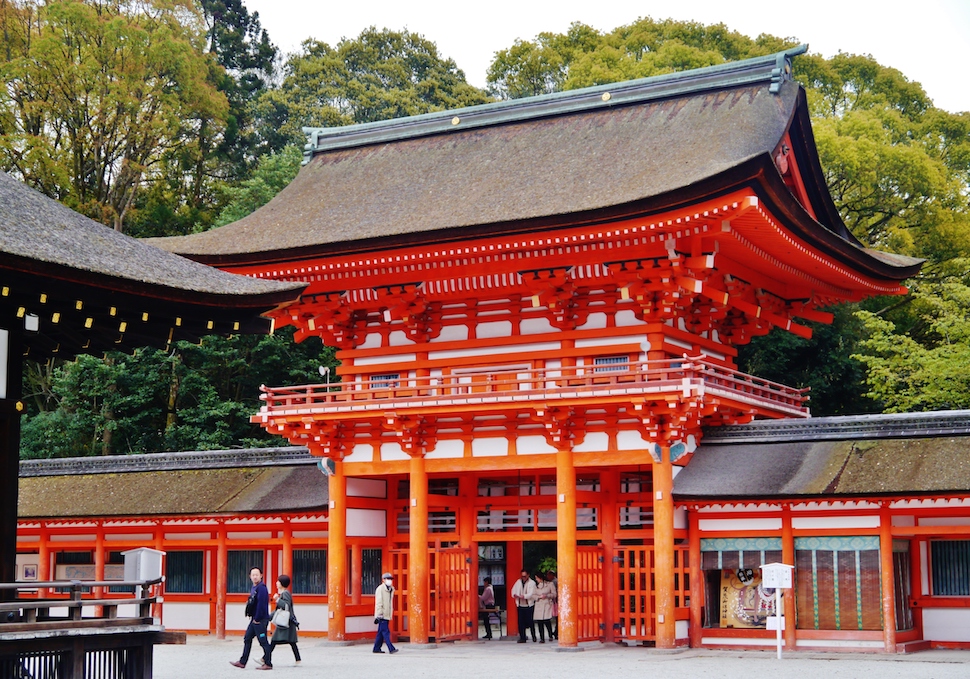
The former capital of Japan, Kyoto is the country’s cultural and historical heart, as well as one of its most enchanting cities. It’s home to everything from spectacular gardens and shrines to ancient temples, geishas, castles and traditional teahouses, while boasting a world-famous sight, a bamboo forest with giant trees, some that tower over 65 feet. Walking through the sea of green, when the sunlight filters through the darkness, you might think you’re walking through a storybook. It’s famous for its food too, a great place to sample all the main classics and sublime kaiseki cuisine.

Hakone National Park, part of the wider Fuji-Hakone-Izu National Park, is a famous resort area known for its stunning views of Mount Fuji and its natural hot springs. A popular weekend or day trip from Tokyo, visitors can take the Hakone Ropeway, climbing 3,425 feet to soak up a spectacular view of volcanic activity. Sightseeing cruises on Lake Ashi are also a favourite way to enjoy the gorgeous vistas, and there are plenty of art galleries and museums to explore too. Hakone is home to a wealth of excellent ryokan accommodation – a great option to relax and unwind while enjoying hot springs and traditional Japanese cuisine.
.
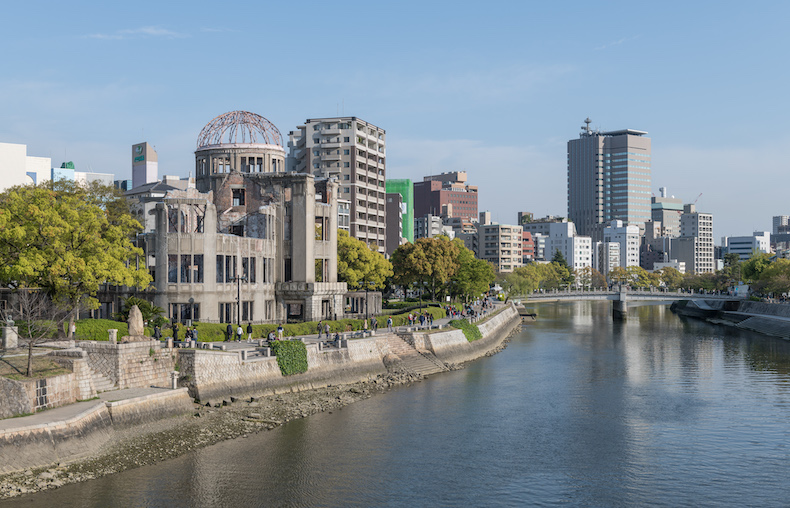
This modern city on Honshu Island was largely destroyed by a nuclear atomic bomb during the Second World War, but it’s made an impressive recovery thanks to the resilience of the people, and continues to develop as a centre for culture, economics, and government. At the plaque marking the site right below the detonation, visitors leave paper cranes and flowers in memory of dead. Peace Memorial Park, built on land that was destroyed by the 1945 bombing, houses a skeleton of a building that provides a poignant reminder. It’s also home to a formal Japanese garden and Hiroshima Castle, surrounded by a moat and park..
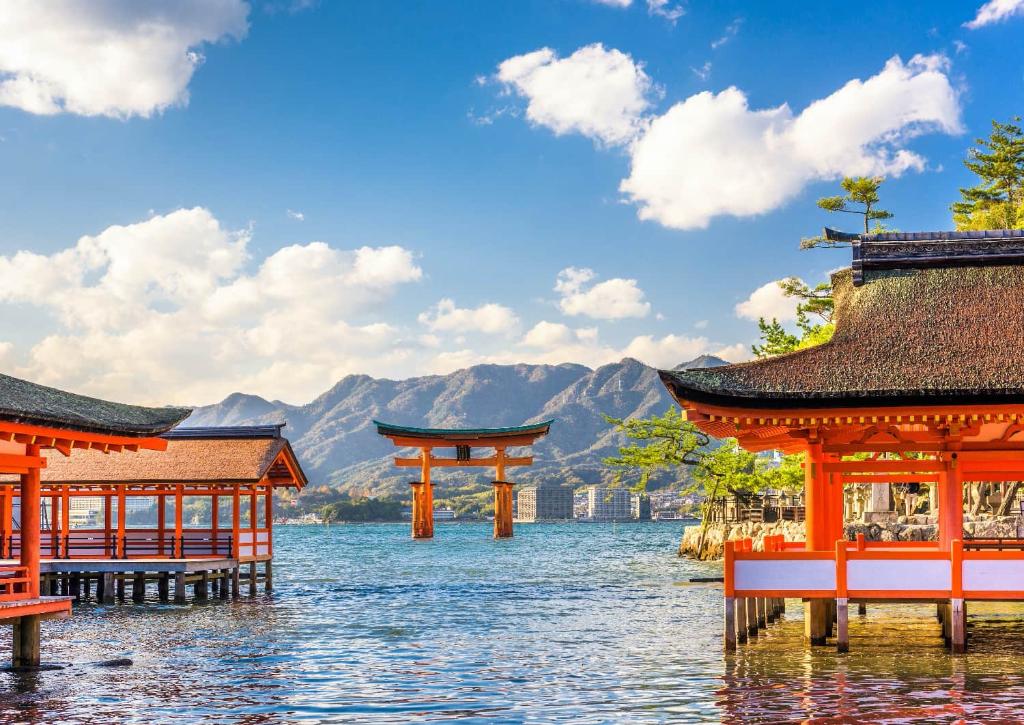
Miyajima is a gorgeous island which makes a great base from which to explore Hiroshima but also to take time out and enjoy a slower pace of travel. All the island’s accommodation – a mix of ryokan and ‘hybrid’ western-friendly ryokan – is located in a pleasant village around the ferry port. The remainder of the island is pure untouched natural beauty: ideal for hikes, hot springs, and nature walks. Also known as “Shrine Island,” Miyajima is home to one of the country’s top three sights, the famous red torii gate, which appears to be floating on the water..
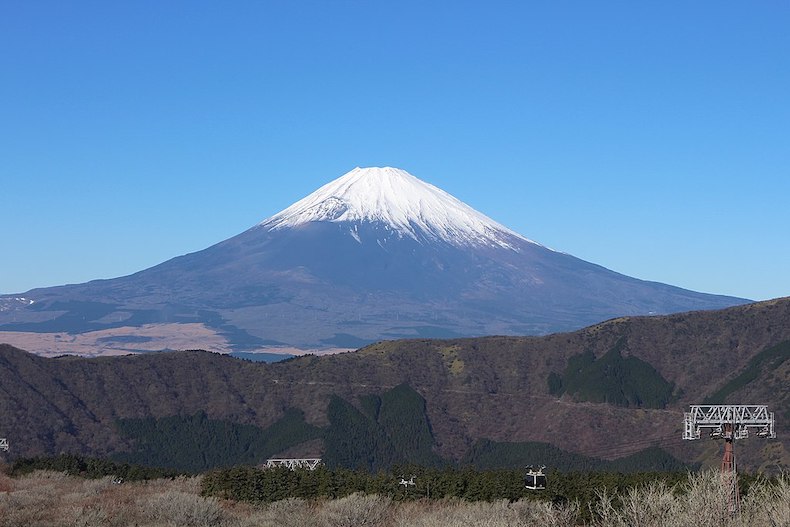
At nearly 12,400 feet high, Mount Fuji is Japan’s tallest mountain, a sacred perfectly shaped volcano that’s been worshipped for centuries. The most iconic of Japan’s images, its symmetrical form has long been celebrated in paintings and poetry, most notably Yamabe Akahito’s 8th-century verses. On a clear day it can be seen from Tokyo, and countless points throughout the surrounding regions, seemingly assuming a different character from each perspective. The Fuji Five Lakes region on its northern slopes of Mount Fuji offers the best chance for good views due to its proximity.

A cosmopolitan city near ancient Kyoto, Osaka is the second largest metropolitan area in Japan after Tokyo. It’s truly a world of its own, with the people here considered the friendliest and most outgoing in the country. It offers everything from Kita’s underground shopping labyrinths to neon-lit Dotombori and historic Tenno-ji which provides a glimpse of old Osaka, home to Tenno-ji Temple and Shin Seka. It’s also known as the place to enjoy some of the tastiest cuisine and the most unique fashions.
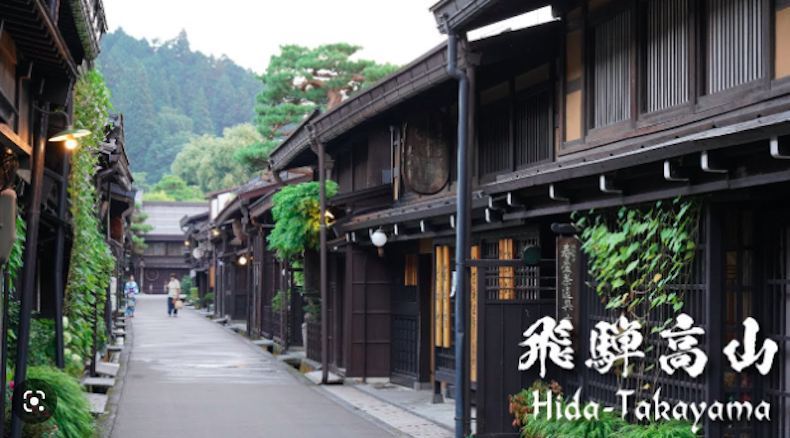
Located in the mountainous Hida region of Gifu Prefecture, picturesque Takayama offers the chance to experience traditional rural life in Japan. It’s famous for its authentic old town, colourful festivals, rich history of carpentry and exceptional high-quality local beef. The star attraction for travellers is the well-preserved old town with its narrow, pedestrian-only streets lined with historic wooden townhouses, some of which now serve as shops and restaurants. Just a short walk east is the Higashiyama Temple Area, with its magnificent gardens and temples.
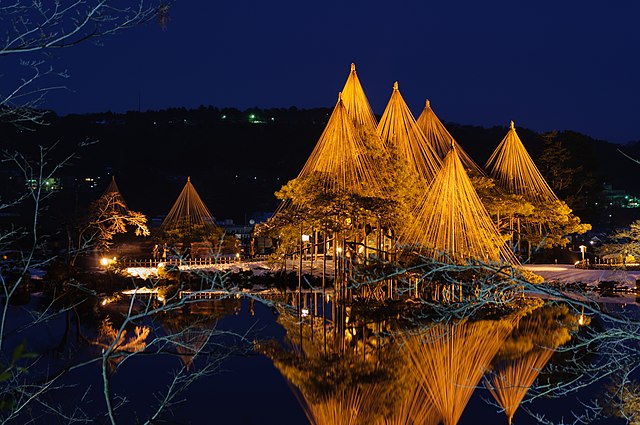
Located on the north coast of central Japan, Kanazawa was one of Japan’s few major cities that was spared from World War II bombing, resulting in a well-preserved architectural heritage. Often referred to as “Little Kyoto,” it’s jam-packed with history and tradition, including a main street with old wooden tea houses in the geisha district, a labyrinth of cobbled streets and samurai residences in the Nagamachi samurai district and an abundance of traditional crafts. Some of the most beautiful gardens in the country can be found here too, with Kenrokuen Garden one of the Three Great Gardens of Japan
Our accommodation in Japan is hand-picked based on thorough research, first-hand visits, and up-to-date feedback. There is a real variety of accommodation on offer in Japan – from mid-range business hotel to a family-run village guesthouse; from boutique spa retreat to luxury small ship cruise – and as hotel junkies ourselves we know that accommodation choices are just as important to a trip as the destinations or experiences.
Hotels in Japanese cities are by and large ‘western-style’, which – biggest budgets aside – often translates to comfortable but functional business hotels. When booking such properties we’ll always prioritise those hotels which offer ideal locations, helpful staff, and good value. Should your budget be more flexible then there are some truly exceptional urban oases on offer: from iconic big brands such as the Park Hyatt Tokyo or Four Seasons Kyoto, to more exclusive hideaways such as an Aman, Hoshinoya, or Andaz.
Out in rural Japan however, the predominant accommodation choice are ryokan – traditional Japanese inns. Ryokan are exactly as you’re probably picturing: matted tatami floors, sliding shoji screen doors, exquisitely-prepared kaiseki meals…all set against a backdrop of manicured gardens and bubbling hot springs. A taste of authentic Japan, with a hosting style which has barely changed since the days of the samurai.
Wherever you’re planning to visit in Japan, and whatever your preferences on accommodation are, there will be some truly memorable properties to suit. Our experts will be delighted to take you through the options.
Embrace the culture shock: a trip to Japan is all about getting to grips with its captivating culture and customs. Tea ceremonies, food tours, sumo matches, neighbourhood walking tours – we can organise a plethora of enticing activities to help get under the skin of this enthralling destination.
In the cities, join our expert local guides to take in all the most important temples, museums, and historic sites, as well using their insight to uncover lesser visited galleries, craft centres, or street food spots. We can also book you onto specialist experiences, either on private or small group basis: a soba noodle-making class, taiko drumming session, or even – a particular favourite – becoming Yoshi, Bowser, or Princess Peach on a go-kart tour of downtown Tokyo.
Beyond the cities you’ll also find Japan an outstanding outdoors destination: mountains, forests, and national parks all ripe for hiking, cycling, kayaking, and of course, at the end of an adrenaline-filled day…outdoor hot-spring bathing! Of particular interest, not just for dedicated hikers, are Japan’s captivating trekking routes: the Nakasendo, the Kumano Kodo, the Shikoku pilgrimage…each offering the chance to step back into (and through) ancient Japan, and each set against a backdrop of spellbinding rural scenery.
Above all else Japan offers variety. Whatever it is you’re looking for from your trip to Japan – ancient history, contemporary culture, artisan crafts, outdoor adventure – there’s a local guide waiting to showcase it, and a UTC expert who’ll be thrilled to make that connection.
.
Below you’ll find a sample of guided tours and activities we offer across Japan. This is just the tip of the iceberg: using our first-hand experience and extensive local contacts we can cater for all manner of interests. Let us know what intrigues you most about Japan, and we’ll map out the perfect itinerary.
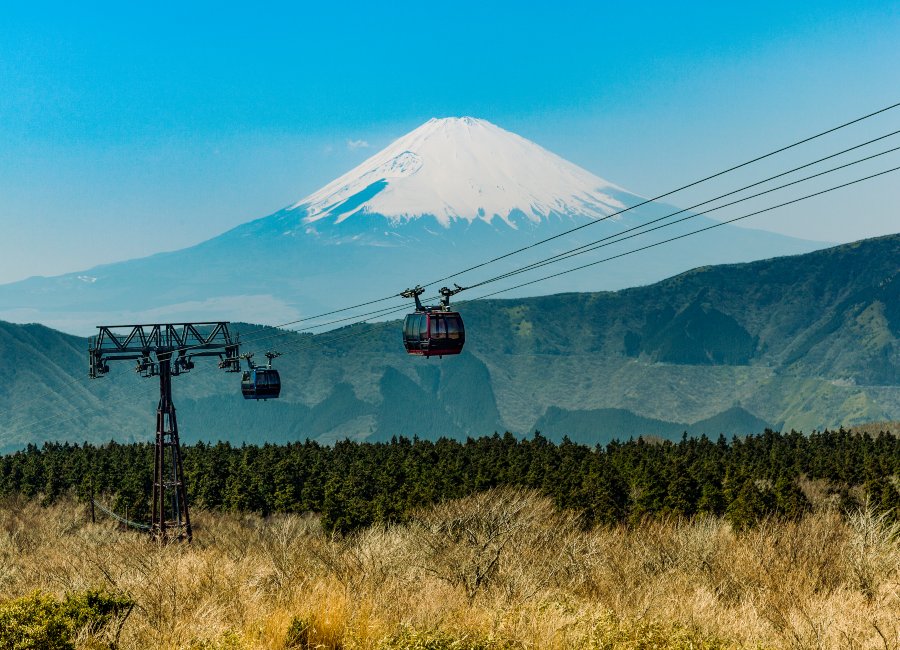
Climbing Japan’s most iconic summit is a true once-in-a-lifetime experience. The climb is a moderately challenging 5-10 hours depending on which of the four trails taken, the most accessible (and therefore most popular) of which is the Yoshida trail. Whichever you choose, you’ll be rewarded with breath-taking views – a bragging rights of course – as you approach the summit. If this is on your list of must-dos, visit between early July and mid-September when the mountain is officially ‘open’ as during this time the weather is mild, and the trails are clear of snow. The climb is popular with locals and tourists alike, and can become quite busy during Japan’s summer school holidays, reaching peak business during the ‘Obon’ public holiday week in mid-August. Please speak to your consultant about how best to time your visit. Accessible from the Fuji Five Lakes area, the climb can be done as (long) day trip from Tokyo, or during a longer stay in Hakone National Park.
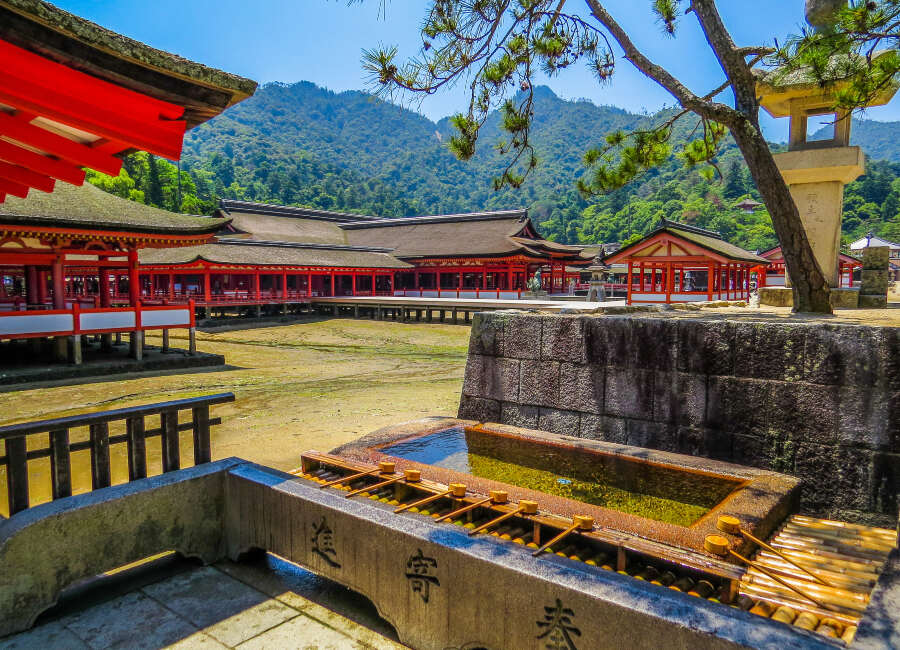
Accessed via a short ferry ride from Hiroshima, Miyajima, or “Shrine Island,” holds one of Japan’s top three beautiful sights. Built in the 12th century, Itsukushima Shrine is among Japan’s most iconic shrines, known for its dramatic red gate which, at high tide, appears as if its floating on the water. Miyajima’s main village is an extremely pleasant getaway from the mainland, housing a few shopping streets, a number of good eateries, and a selection of excellent ryokan or hybrid ryokan. Due to the rather uninspiring nature of accommodation across in Hiroshima, we often recommend staying over on the island for a more rounded experience, popping back over to Hiroshima should you wish to view the historical sites here..
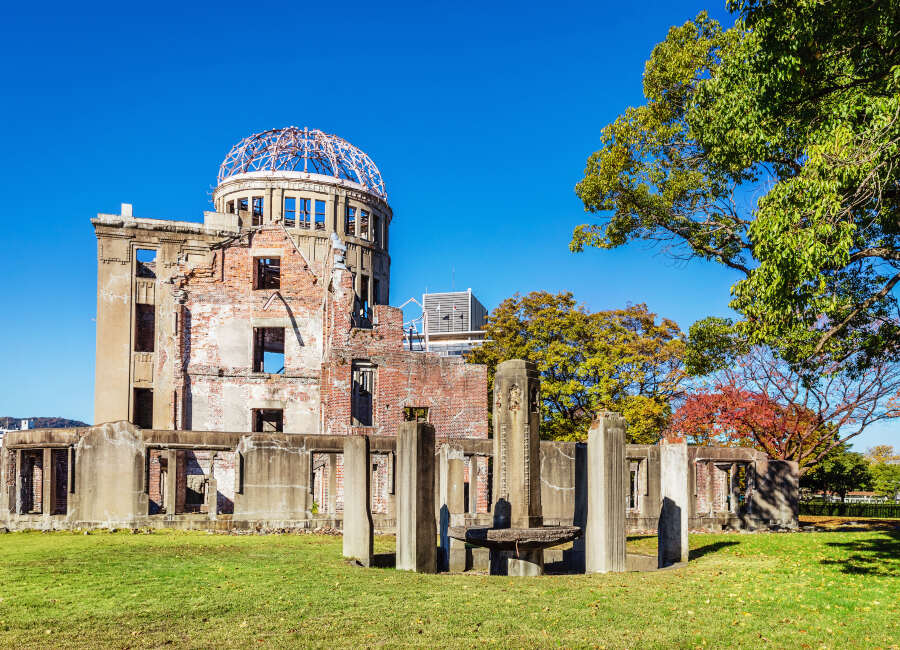
In 1945, Hiroshima was infamously devastated during the World War II nuclear atomic bombing attack that killed tens of thousands of people. Its Peace Memorial Park was built on land that was destroyed by the bomb, with a skeleton of a building called the A-Bomb Dome, providing a poignant reminder. A cenotaph monument holds the names of the bomb’s known victims. Despite it’s rather grim historical associations Hiroshima is an engaging and lively city to visit, known Japan-wide for its cuisine. Okonomiyaki – a fried savoury pancake with a DIY approach to fillings – is the most well-known dish; the local oysters and tsukemen ramen are also well worth a try.
Experience the contrast of Hiroshima on our Grand tour of Japan example itinerary
Soaring Mount Kinabalu, located a couple of hours’ drive inland from Kota Kinabalu, is Southeast Asia’s tallest peak. Reaching the summit is a trek, rather than a climb (no crampons required!) but is a challenging endeavor and not for novice walkers. You’ll spend the first night in Kinabalu National Park HQ – surrounded by tropical gardens and natural hot springs – before beginning the hike proper. A second night is in basic dormitory accommodation around two-thirds up, waking at around 1am to complete the hike in darkness, arriving at its lunar-like summit in time for an unforgettable sunrise.
Tourists flock in their droves from across Japan and the wider world to see Japan’s legendary cherry blossoms. Although there is no fixed date – predicted peak bloom dates are subject of much scrutiny and discussion within Japan each year – the season generally runs from around late March through to mid-April in key destinations Tokyo and Kyoto. A one-of-a-kind experience, the photo-ops are endless, with the trees bursting with colour, often complementing magnificent backdrops of temples, picturesque parks, or placid waterways. A pro-tip, should you wish to see the blossoms but avoid the crowds and peak season surcharges which come with them, is to head up north to Hokkaido later in the season, or down to the warm climes of southern island Kyushu earlier on.
Japan’s public transportation is renowned the world over for its efficiency and ingenuity. Never is this more apparent than when taking one of Japan’s iconic shinkansen bullet trains, which race from city to city at speeds of up to 320 kph. A particular favourite at UTC is the run between Tokyo and Kyoto – just 2.5 hours at quickest route – which on good days can offer glimpses of Mount Fuji. Blink and you’ll miss it!
A pilgrimage trail that runs through the mountainous Kii Peninsula, Buddhist monks and other pilgrims have walked Kumano Kodo roads for more than a thousand years to reach some of the country’s most sacred temples and shrines. The collection of interconnecting ancient routes lead hikers through stunning landscapes, giant cedar forests, small villages, picturesque farmsteads, and soothing springs. A recommended route takes around 3 days’ in total, staying overnight in small village ryokan and minshuku along the way. You may also consider the Nakasendo route, which snakes through Japan’s stunning Alpine region, and was once the main highway between Edo (ancient Tokyo) and Kyoto (former capital).
Fewer tourists visit Japan in the winter than any other season, so if you plan your visit well this can be an exceptional time to travel: avoiding the crowds, enjoying competitive rates, and accessing regions of the country which may not be considered at other times or year. The winter months are the best time of year for skiing, so if you’re looking for action on the slopes there’s nowhere better in Asia than the resorts of Hokkaido to the north, or Hakuba in the Alps. The central island of Honshu can be quite cold in these months, with average temperatures in Tokyo ranging from about 36 to 54 degrees Fahrenheit, and occasionally dropping below freezing. Keep in mind that the Christmas holidays are a busy time to travel so you’ll need to book your accommodation well in advance. Wherever you travel during this time, make the most of Japan’s warm outdoor hot springs – bathing outdoors amongst a carpet of snow is a truly magical experience!
Spring is undoubtedly most popular time for a visit to Japan. Japan in spring is the just the most beautiful place to be, with fantastic warm weather for sightseeing, and – if you time your visit right – a carpet of cherry blossom through the parks and cities. The climate at this time is pleasantly warm with barely any rain: temperatures in Tokyo average anywhere from 50 to 70 degrees Fahrenheit, so a t-shirt and light jacket or jumper should be all you need each day. The good weather and exceptional scenery brings with it an exceptionally high demand for accommodation: you’ll need to book well in advance and prepare for crowds. During Golden Week (usually April 29 to May 5), Japan will be at its busiest with many Japanese traveling around this time too.
Summer in Japan is typically quite warm and humid. Average temperatures in Tokyo are between 64 and 84 degrees Fahrenheit, but can far exceed this in exceptionally warm days. Early summer also brings a short, sharp monsoon period, with rains peaking in June. While the parks and gardens will be beautifully lush, we recommend packing an umbrella wherever you go as the weather can change quickly. At such time of year we recommend heading north: Hokkaido in early summer is divine, with much cooler temperatures and a late spring blossom. Should you stick to Honshu, the summer sees a raft of exciting festivals – most famous of which is the Kyoto Matsuri festival in July – and its also the best time of year to attempt a climb of Mount Fuji.
Fall months see a return to temperate weather, but less so the crowds and peak season pricing. October and November are particularly gorgeous and can be a little busy, but crowds never reach the peak of March and April. September and early December are considered shoulder season – seeing a dip in hotel rates – and if the weather works out can be exceptional times to visit. The autumnal months are the perfect time to get out and about, especially in the mountains which see a dramatic wash of reds and yellows. Now is the time to consider that multi-day hike on the Nakasendo or Kumano Kodo! Temperatures range in Tokyo will range 79 degree Fahrenheit in the later summer weeks of September to 79 towards the end of November.
We firmly believe that researching a trip is often just as exciting as the trip itself. As travel geeks ourselves we’ll happily spend hours sifting through the guidebooks and the blogs…even for trips we’re not actively planning! We know our clients are likely to be of a similar persuasion, so our experts have put together a selection of articles and guides for you to dive into.
First and foremost: logistical queries. When is the best time to travel to Japan? What is the seasonality? When is cherry blossom season exactly? How long should our trip be, and what should we budget for? You’ll find these nuts-and-bolts queries answered below, or in greater depth on our dedicated tours, experiences, and accommodation pages.
We’re also keen to hear queries across the board of travellers and trip styles. Is Japan a good honeymoon destination? How about for family trips? What’s the skiing like? Or hiking? Are there any beaches? If you can’t find what you need below then please give our specialists a call and they will be delighted to go through all of this and more, in as much depth as you require!

S. Srinivasan
+91 8610779636
Talk to our expert for further enquiry about tour and destination packages. We are here to help you 24/7 and recommend you budget packages.
